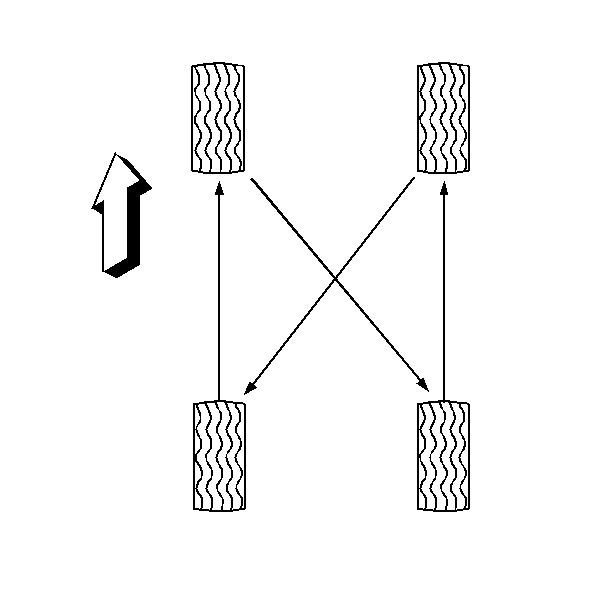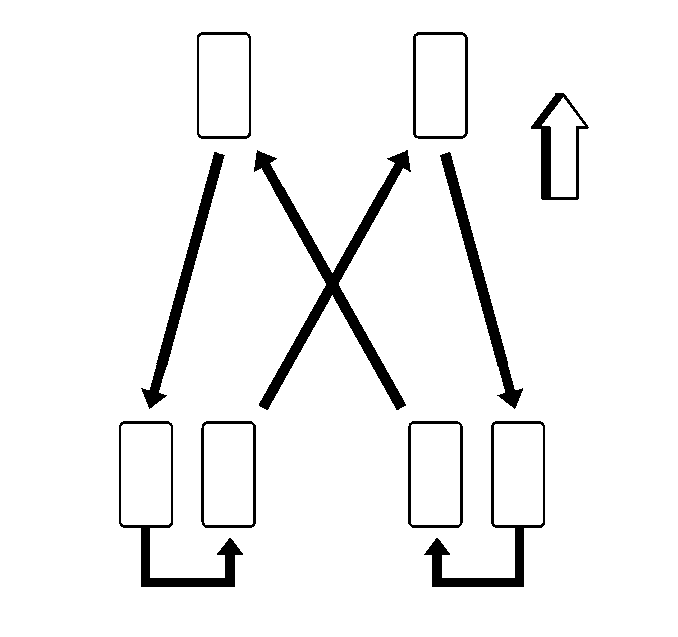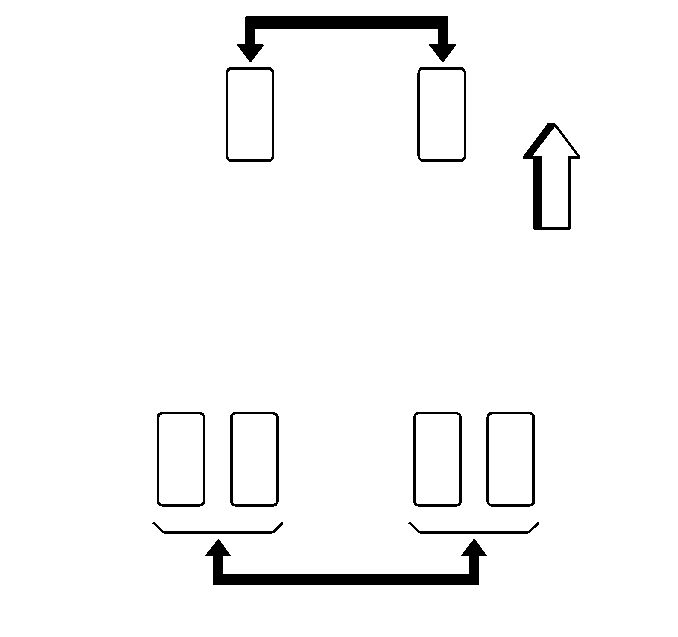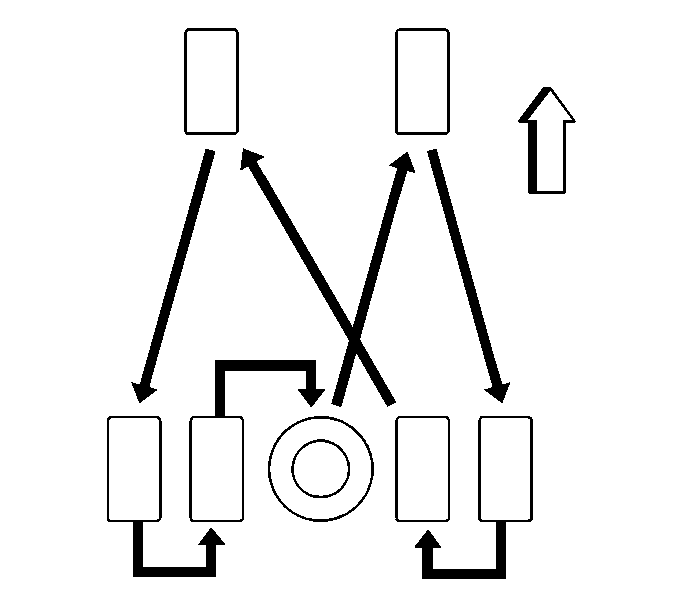In order to equalize wear, rotate the tires at the specified intervals. Refer
to
Scheduled Maintenance
in Maintenance and
Lubrication. In addition to scheduled rotation, rotate the tire and wheel assembly
whenever you notice uneven tire wear.
Radial tires tend to wear faster in the shoulder area, particularly in front
positions, due to design. Radial tires in non-drive locations may develop an irregular
wear pattern that can generate tire noise. This especially makes regular tire rotation
necessary.
| • |

For vehicles with single rear
wheels (4 tires), rotate the tires as shown. |
| • |

For vehicles with single rear wheels (5 tires),
rotate the tires as shown. |
| • |

For vehicles with dual rear wheels, same
tire sizes and load ranges, rotate the tires as shown. |
| • |

For vehicles with dual rear wheels, different
tire sizes and load ranges, rotate the tires as shown. |
| • |

For vehicles with dual rear wheels, including
the spare tire, rotate the tires as shown. |





